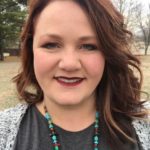
Health Disparities: A Native American Case Study
BY CAROL A DEMOND, APRN, CNP-C, AND JENNIFER A WOFFORD
Introduction
The Centers for Disease Control and Prevention define health disparities as preventable differences in the burden of disease, injury, violence, or in opportunities to achieve optimal health. Tribal healthcare goals are to focus resources in hopes of preserving the lives and rich culture of Native Americans. Research indicates that availability of services, access to care and socioeconomic barriers are significant burdens in the American Indian/Alaskan Native (AI/AN) populations.
The top three causes of mortality in the AI/AN population are heart disease, cancer and unintentional injuries. To effectively enact change, we need to provide health education, promote healthy practices, and implement health prevention strategies to each level of the family unit. Heart disease, for example, starts with educating on healthy habits starting in infancy, nutrition, rest, physical activity, stress reduction, avoiding environmental toxins and avoiding exposure to alcohol, drugs and violence. It is vitally important to ensure access to care for routine health checks and screening for conditions that increase cardiovascular risk (hypertension, diabetes, high cholesterol). Early intervention in the disease process requires access to a specialist.
Case Study
Anna, a 54-year-old Native American woman, presented to establish care with concerns that she might be diabetic. Her parents were diabetic, and over the last 18 months she noticed increased urination and 12-pound weight loss. Baseline screening labs indicated her fasting sugar was 180 and her HgA1C was 9.7 (6.5 is diagnostic for type 2 diabetes). Her baseline lipids were total cholesterol 235, triglycerides 82, HDL 59, and LDL 159. Creatinine and thyroid levels were within normal limits. Vitamin D was 17 with a goal for bone health >70. She was started on metformin 500 mg two times a day, Lisinopril 5 mg daily, Crestor 5mg daily, Coenzyme Q10 daily, and cholecalciferol 5000iu daily. The goal for her A1C is less than 7.0. The goal for cholesterol is total less than 200, triglycerides less than 50, HDL greater than 45, and LDL less than 100.
She was referred for enrollment in the diabetic clinic and went to the Wellness Center to pick up a glucose meter and supplies. She then went to pharmacy and had a one-on-one consult with a pharmacist where her medications were reviewed, instructions given and questions answered.
Once enrolled (3 weeks from diagnosis), she was given a 1-hour appointment with the dietician and the diabetic educator. She received written instructions on food choices, serving sizes and sample shopping lists. The diabetic educator reviewed her glucometer readings and had a conversation regarding the process of diabetes and how it affects her body, including the benefits of having her blood work at goal to minimize cardiovascular risk. Anna was given a tour of the on-site exercise facility and the outdoor walking track. She was scheduled for and competed a dilated eye exam, and she was scheduled for a dental cleaning. She had an appointment in one month with the diabetic educator.
At her 4-month follow-up appointment with the primary care provider, Anna’s HgA1C was 7.8, total cholesterol 200, triglycerides 90, HDL 52, and LDL 98. She was monitoring her glucose every morning at 100% compliance and 2 hours post-meals at 40% compliance. She completed her Well Woman exam and mammogram during this follow up. She declined colon cancer screening. She also met with the dietician and the diabetic educator.
At her 8-month post-diagnosis visit, her HgA1C was 7.0, total cholesterol 119, triglycerides 64, HDL 52, and LDL 75. Anna reported she was feeling better, and her symptoms of increased urination had completely resolved. She also reported a general increase in energy and no side effects from her medication.
Indian Health Services
One example in which Indian Health Services (IHS), tribal health programs and urban centers (I/T/Us) are working diligently for early intervention and improved outcomes is the Special Diabetes Program for Indians (SDPI) offered across I/T/Us. This program starts at diagnosis. When members are given a type 1 or type 2 diabetes diagnosis they are enrolled in a diabetic clinic. This clinic gives them access, when available, to a diabetic educator, dietician, healthcare provider, optometrist, podiatry/foot care specialist and pharmacist who work closely to ensure the patient has access to care that meets the national standards of practice. All diabetic patients are given glucose meters and testing supplies. Access to continuous glucose monitors (CGM) are available when specific criteria are met. The patients’ baseline assessment includes glucose, hemoglobin A1C, renal and liver function, lipids, phosphorus, thyroid and anemia assessment, PSA for males, hepatitis C, HIV and Tb screening. And a baseline EKG. Patients are then seen by a healthcare provider every four months in a diabetic clinic where labs are drawn to assess diabetes management and cardiovascular risk. They are also assessed at each visit for anxiety, depression, domestic violence, vaccination status and eligibility, colon cancer screening status, breast cancer and cervical cancer screening status, pain, and substance abuse/misuse. On a yearly basis, they will receive a dilated eye exam or equivalent and a detailed foot assessment. The SDPI program has helped AI/AN to gain confidence in their ability to manage their health as well as facilitating change for future generations.
Indian Health Services (IHS) began July 1, 1955, 1 year after the transfer of Native American Health Services from the Bureau of Indian Affairs (BIA) to the Public Health Services (PHS). IHS operates as an agency within the Department of Health and Human Services. I/T/Us service locations provide healthcare service to members of the current 574 federally recognized tribes in 37 states. There were approximately 2.56 million AI/AN per the 2020 U.S. Census.
In fiscal year 2022, IHS received approximately $6.6 billion in enacted level funding from the federal government. I/T/Us are also eligible to derive income from billing private insurance, Medicare and Medicaid. According to the National Congress of American Indians, for fiscal year 2017 an approximate $4,079 was spent per patient in comparison to the $9,726 per patient that was spent on average nationally by commercial insurance.
Purchased Referred Care
The primary care system in rural and urban sites is strained. These programs are utilizing Purchased Referred Care (PRC), patient benefits coordinators and nurse case managers to recognize family barriers to accessing care and bridging that gap between providers and patients. The nurse case managers work closely with their assigned providers to ensure that patients receive timely and appropriate referrals for specialty care, follow-up appointments for emergency room visits/care, and hospital discharges. If a patient is lacking in services or has a need outside the scope of the I/T/U, referrals for assistance can be made to a variety of resource contact points.
PRC is for medical/dental care provided away from an I/T/U. Much like eligibility for services at an I/T/U does not count as creditable coverage for insurance other than in the case of Medicare Part D, PRC is not an entitlement program, and a PRC medical referral does not imply the care will be paid. If an I/T/U is requested to pay, then a patient must meet the AI/AN Native tribal affiliation, residency requirements, notification requirements, medical priority and use of alternate resources (including available I/T/U facilities). PRC services are covered based upon a priority rating of the services needed and available funding. In many cases the services are limited to a “life or limb” criteria. A patient who is referred to PRC for what is commonly referred to as “outside services” will be screened for any available alternate third-party payer resources. This screening is the primary function of the patient benefit coordinator (PBC) that most I/T/Us have on staff. The PBC works as a liaison for the patient with various local, county, state and federal programs to obtain third-party payer coverage as I/T/Us are payers of the last resort. These programs can include tribal health benefit programs, charity care programs at the source of services, Medicaid and/or Medicare eligibility, veteran’s benefits eligibility and enrollment in an Affordable Care Act insurance plan.
Summary
The nurse case managers track the patients through the healthcare continuum, making sure that proper and timely referrals are written for specialist, testing and additional follow-up care. They ensure that records are received and provided to the healthcare practitioner so that the patient’s healthcare needs can be timely and fully addressed. The nurse case managers regularly speak with patients, ensuring the patient’s continuity of care and addressing any concerns the patient or their representative may have. They are an integral and essential part of addressing the health disparities in the American Indian/Alaskan Native population.
References
https://www.nlm.nih.gov/exhibition/if_you_knew/ifyouknew_09.html
https://www.ihs.govihscalendar/download/?method=inline&fileID=A46CC39B-D345-8653-0D5F7702E080EB76
https://www.ncai.org/07_NCAI-FY20-Healthcare.pdf
https://www.ihs.gov/newsroom/factsheets/disparities/
 Jennifer Wofford has 20 years of experience in the healthcare industry and is currently employed by the Oklahoma Department of Mental Health and Substance Abuse Services as the health information coordinator at the Oklahoma Forensic Center. Jennifer also serves as the president of the board of directors for Trickster Cultural Center.
Jennifer Wofford has 20 years of experience in the healthcare industry and is currently employed by the Oklahoma Department of Mental Health and Substance Abuse Services as the health information coordinator at the Oklahoma Forensic Center. Jennifer also serves as the president of the board of directors for Trickster Cultural Center.
 Carol DeMond, APRN, CNP-C, graduated from nursing school in 1998 and received a Masters in Nursing from the University of Oklahoma in 2007. She is a member of Wyandotte Nation and has been serving the Native American population as a family nurse practitioner for the last 14 years. Carol is proud of her heritage and thankful to give back to the community that she holds dear to her heart. In 2020, Carol received the Oklahoma City Area Indian Health Service Area Directors Excellence in Customer Service Group Award.
Carol DeMond, APRN, CNP-C, graduated from nursing school in 1998 and received a Masters in Nursing from the University of Oklahoma in 2007. She is a member of Wyandotte Nation and has been serving the Native American population as a family nurse practitioner for the last 14 years. Carol is proud of her heritage and thankful to give back to the community that she holds dear to her heart. In 2020, Carol received the Oklahoma City Area Indian Health Service Area Directors Excellence in Customer Service Group Award.




